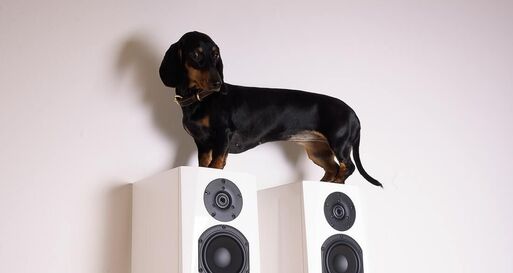|
Some breeds are genetically more sound sensitive than others. Border Collies and German Shepherds come to mind.
However, by far the most common reasons dogs develop anxiety, fear and phobias of sounds is because of a lack of ‘sound acceptance’ training when they were under 16 weeks of age or sometimes because of a trauma event. For a dog to function in a human world we expect them to just adapt to what we see at the norm. However, because a dog's senses are so much more heightened than ours, it can be difficult for us to understand why some dogs react to certain sounds. This may be because of the:
So in order for a dog to feel comfortable with these sounds it takes positive association training in that window of opportunity before they are 16 weeks of age. After this time, any sounds that your dog is not positively associated with or desensitised to, could be deemed as a potential ‘threat’ and therefore one of 3 innate reactions must occur:
Most young dogs or any that lack confidence first choose the ‘Flight’ option, as it makes more sense and it is less conflicting. However if this option is removed (by either the dog being on lead or contained in an area/garden where they do not feel secure) then the most common action is the ‘Fight’ option. Some dogs may freeze but as this puts them at the mercy of the sound, they often soon realise that it is not the best option. The Fight option means a display or an act of aggression may occur. For many dogs, this involves barking. If (and it only takes once), when they bark the very thing they are afraid of either moves away or stops (and it can be coincidental), then in their mind they realise that it is the most effective method for stopping the threat. This can progress quickly if not handled appropriately at the beginning. Many dogs actually gain a lot of confidence from rehearsing this behaviour. How to Implement Sound Desensitisation Programme Desensitisation is a way of very slowly getting your dog used to the sounds he is anxious about by very small repeated exposures until he no longer takes any notice of them. The Right Set Up:
Stage 1:
Stage 2:
Stage 3:
Stage 4:
Stage 5:
The Do’s and Don’ts of the Programme
BUILD A POSITIVE RESPONSE WITH OR WITHOUT FOOD?
Common Sounds & Movements That Can Worry/Excite Dogs – for example:
We have put together a FREE Sound Cloud library of sounds for you to access whenever you choose to go with the above advice. The more you do this, the better and start as early as possible with puppies.
1 Comment
Reply
Leave a Reply. |
AuthorsArticles created by the team at Allsorts Dog Training, Bay of Plenty, New Zealand Our Library
All
|


 RSS Feed
RSS Feed